PROTECT YOUR DNA WITH QUANTUM TECHNOLOGY
Orgo-Life the new way to the future Advertising by AdpathwayAgastaches are some of the most fragrant perennials you can plant! Their leaves, blooms, and stems emit strong, herbal fragrances when you brush past them. Different agastaches have different aromas, and you can choose one that smells the best to you.
Licorice mint has a licorice-like aroma, hence its name. It features light purple flower buds, salmon-orange blossoms, and narrow, lance-like leaves. They’re incredibly ornamental, working well in herb, veggie, or flower gardens. They defy categorization!
Some growers like to use licorice mint leaves and flowers to make a refreshingly herbal tea. Others use it to keep deer and other leaf-feeding pests out of the yard. My favorite reason for growing it is to help as many hummingbirds, insects, and small critters as possible!
Licorice Mint Overview

|
Plant Type Herbaceous perennial Family Lamiaceae Genus Agastache Species rupestris |
Native Area Arizona, New Mexico, and Mexico Exposure Full sun to partial shade Height 1-3’ Watering Requirements Low |
Pests & Diseases Root rot, rust, powdery mildew, and leaf spot Maintenance Average Soil Type Well-drained Hardiness Zone 5-9 |
What Is It?
Licorice mint is an herbaceous perennial in the mint family, Lamiaceae. Its scientific name is Agastache rupestris, and it’s a close relative of other familiar agastaches, like anise hyssop and mosquito plant.
Native Area
 Hummingbirds adore the flowers.
Hummingbirds adore the flowers. Licorice mint grows wild in parts of Arizona and New Mexico. It also grows on cool slopes with good drainage in northern Chihuahua, Mexico. It’s frost tender, and its stems die back to the ground in response to cold winter temperatures.
Nowadays, agastaches are growing in popularity. They used to be called giant hyssops, though they’re not technically in the Hyssopus genus. Licorice mint goes by hummingbird mint, threadleaf giant hyssop, and sunset hyssop.
Despite the presence of many hybrids and cultivars at nurseries, native agastache species are the best types to grow for wildlife! They’re perfect for gardens in the Southwest.
Characteristics
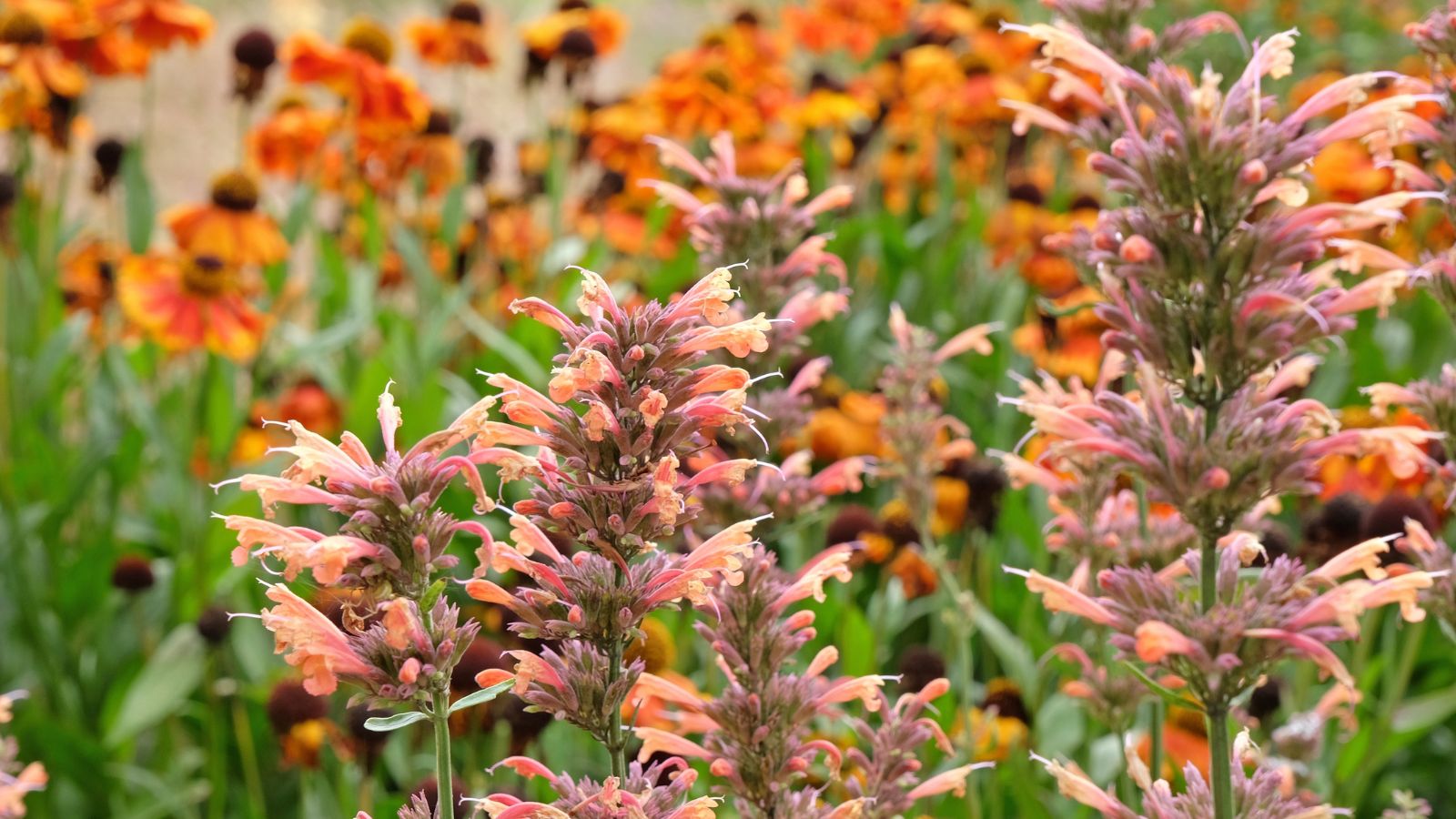 The flower spikes are tall and packed with orange blooms.
The flower spikes are tall and packed with orange blooms. This agastache species has narrow, lance-like leaves. Its stems reach between a foot and three feet tall, and they stand erect as they grow. Atop their ends emerge flower spikes full of tubular orange blossoms. Inside the tubes, nectar lies hidden for hummingbirds and foraging insects to find.
After pollination occurs, the blooms form dry, papery heads full of seeds. They’ll scatter themselves in the garden, and you’ll see a few seedlings grow next to the original plant in subsequent years. You may pull the seedlings if you don’t want them to grow, or let them mature for free plants!
An herbaceous perennial, this species dies back in response to cold winter temperatures. You’ll see new sprouts appear in spring. They’ll quickly mature into full-size stems by the end of spring. They’re generally winter hardy in USDA hardiness zones 5 through 9.
Planting
Whether you’re sourcing potted plants or starting seeds yourself, the planting process is a crucial step in setting up agastache plants for success. A proper planting process will ensure you grow the largest, bushiest, and most fragrant licorice mint possible!
Growing from Seed
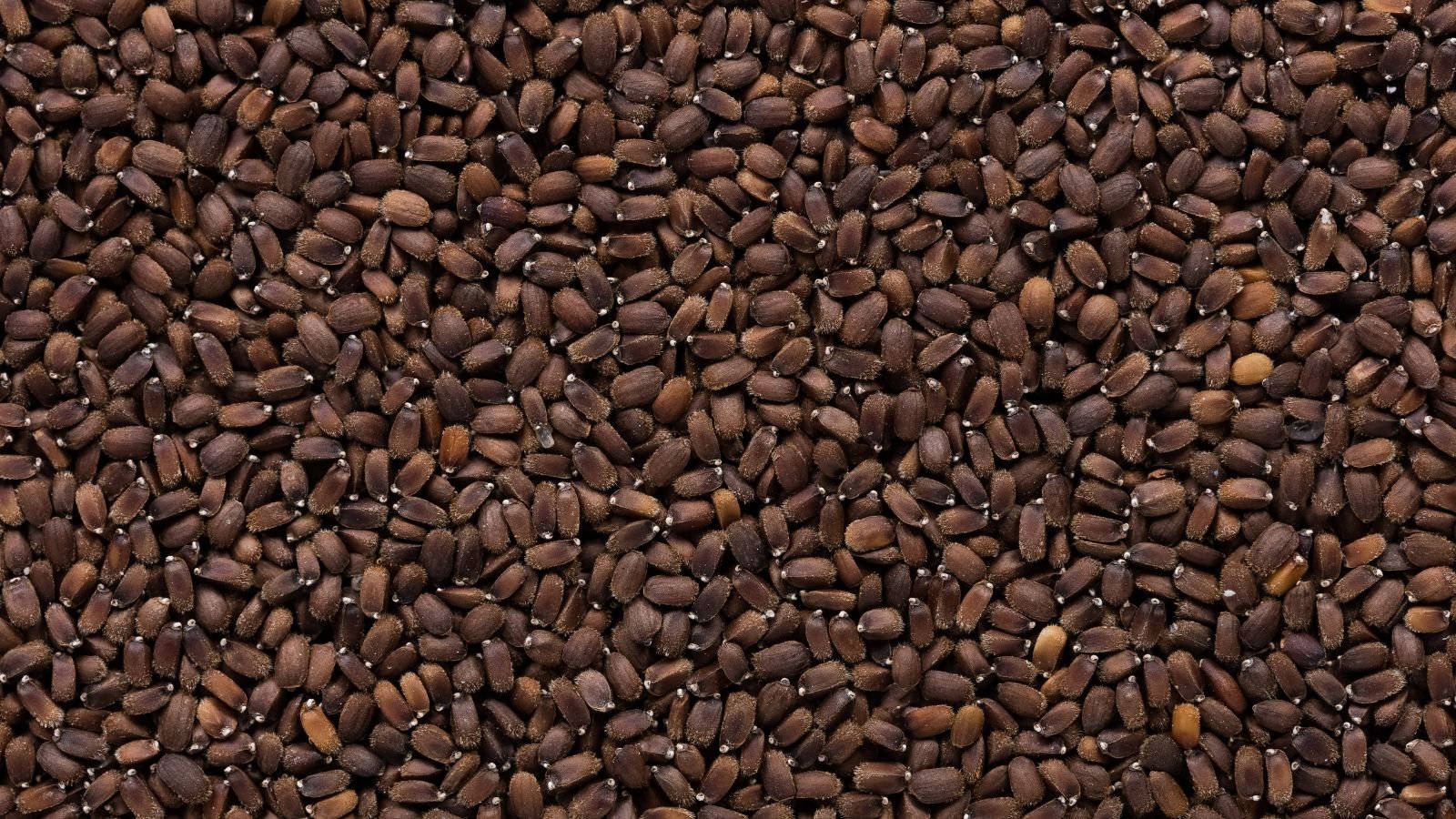 Moisture is essential for even germination.
Moisture is essential for even germination. Licorice mint seeds need some care to sprout well. Sow them outdoors in early spring or indoors in pots. Press them into the surface of the soil, and keep them moist while they sprout. They need bright light to germinate, either from the sun or grow lights.
After sprouting, the seedlings prefer mild weather while they mature. Protect them from extreme frost or heat. Let them flourish for a few weeks in their pots before transplanting them into the garden. They’ll appreciate the time and form a robust root system.
Transplanting
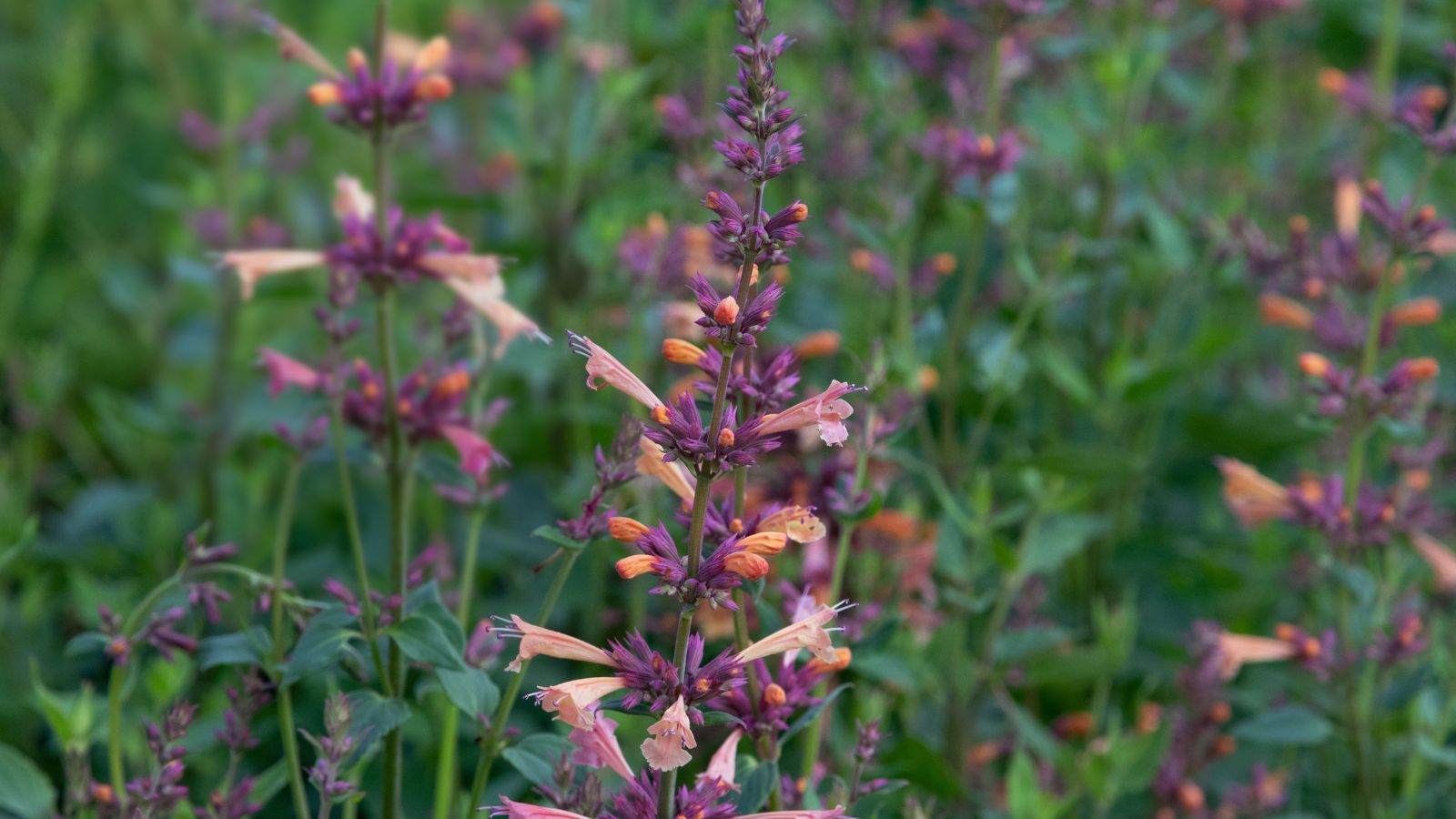 Transplant during cool weather to prevent stress.
Transplant during cool weather to prevent stress.Transplant your potted licorice mint in spring or fall when the weather is cool and mild. Do so after the last frost date in spring, or one to two months before the first frost date in the fall. Avoid transplanting during summer, as high temperatures and infrequent rainfall create harsh conditions.
Start the transplanting process by digging a hole as deep and twice as wide as the agastache’s roots. The wide hole helps the roots penetrate the soil after planting. Situate the licorice mint inside the hole so that its stems sit above the ground, and fill the hole with the soil you dug out earlier.
Water the plant well, then add more soil if it sinks below ground level. Keep the soil moist, but not soggy, and the agastache will establish itself in a few weeks.
How to Grow
This U.S. native doesn’t need much to grow well! It’s a high performer in home gardens. Use it in a rock garden with ample drainage, or plant it en masse on hillsides and slopes. With the right care, licorice mint will grow well for years to come.
Light
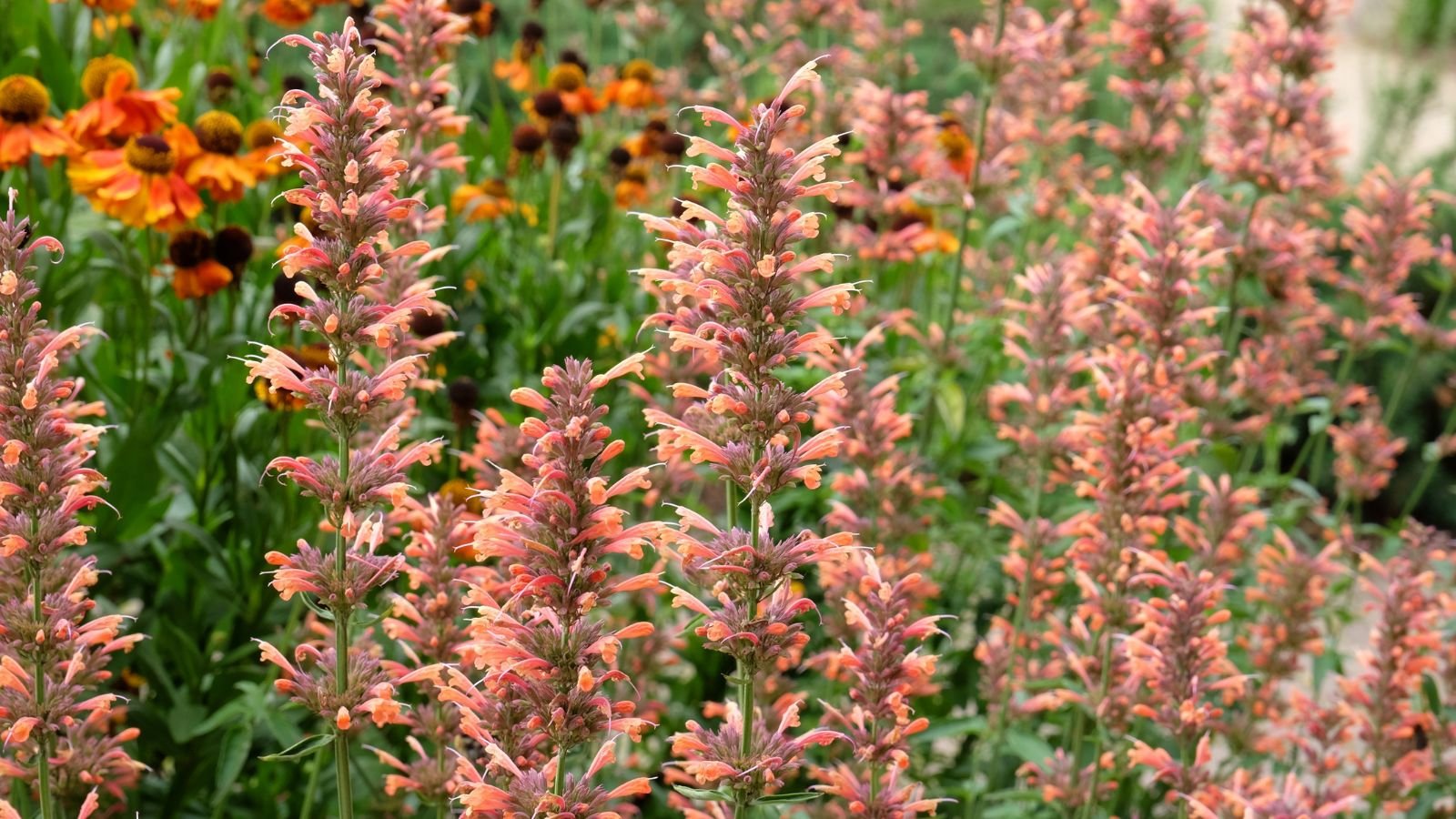 Aim for a position with around four hours of direct sun.
Aim for a position with around four hours of direct sun. Agastache rupestris grows best under full sun or partial shade, with three or more hours of daily direct sunlight. The more sun, the better—shaded plants grow leggy and tall, while well-lit ones stay bushy and dense.
Though this mint relative grows well in partial shade, powdery mildew may grow on it if the weather is humid and warm. If you see white, fuzzy growth on the leaves, provide more direct sunlight and ward off the infection. Prune taller trees and shrubs to let more light into the garden, or move container specimens to a sunny location.
Water
 Don’t overwater this perennial.
Don’t overwater this perennial. Licorice mint grows best with little water, and it’s drought-tolerant once it establishes itself. Too much moisture will cause poor growth. Eventually, it’ll invite root rots. Water the soil if it’s dry, but wait to water if it’s already moist.
Avoid putting this perennial next to wet lovers like mint. Just because it’s in the mint family doesn’t mean it loves moisture! It’ll need good drainage and little water to thrive.
Soggy soil during winter can be deadly for your agastache. Choose a site with a covering to protect it from winter rains, or plant it in a container that you can move underneath cover.
Soil
 Choose slightly sandy, well-draining soil sites.
Choose slightly sandy, well-draining soil sites. Well-drained soil is best for licorice mint. It’ll thrive in rocky, gritty, and sandy soils. You want to mimic the soils of this perennial’s native range. It grows on cool hillsides and rocky slopes throughout Arizona and New Mexico.
Grow potted specimens in a free-draining potting soil. Use a blend made for cacti and succulents, or make a homemade soil mixture. Use plenty of pumice, perlite, or vermiculite to create a mix that drains well.
Fertilizing
 Light fertilization improves flowering.
Light fertilization improves flowering. Some organic fertilizer during the growing season helps boost flowering rates. Give your perennials a regular dose of a well-balanced fertilizer when new growth begins in spring. Avoid adding too much nitrogen, as it’ll cause leafy growth at the expense of blooms. Use a mix with equal parts nitrogen, phosphorus, and potassium.
Maintenance
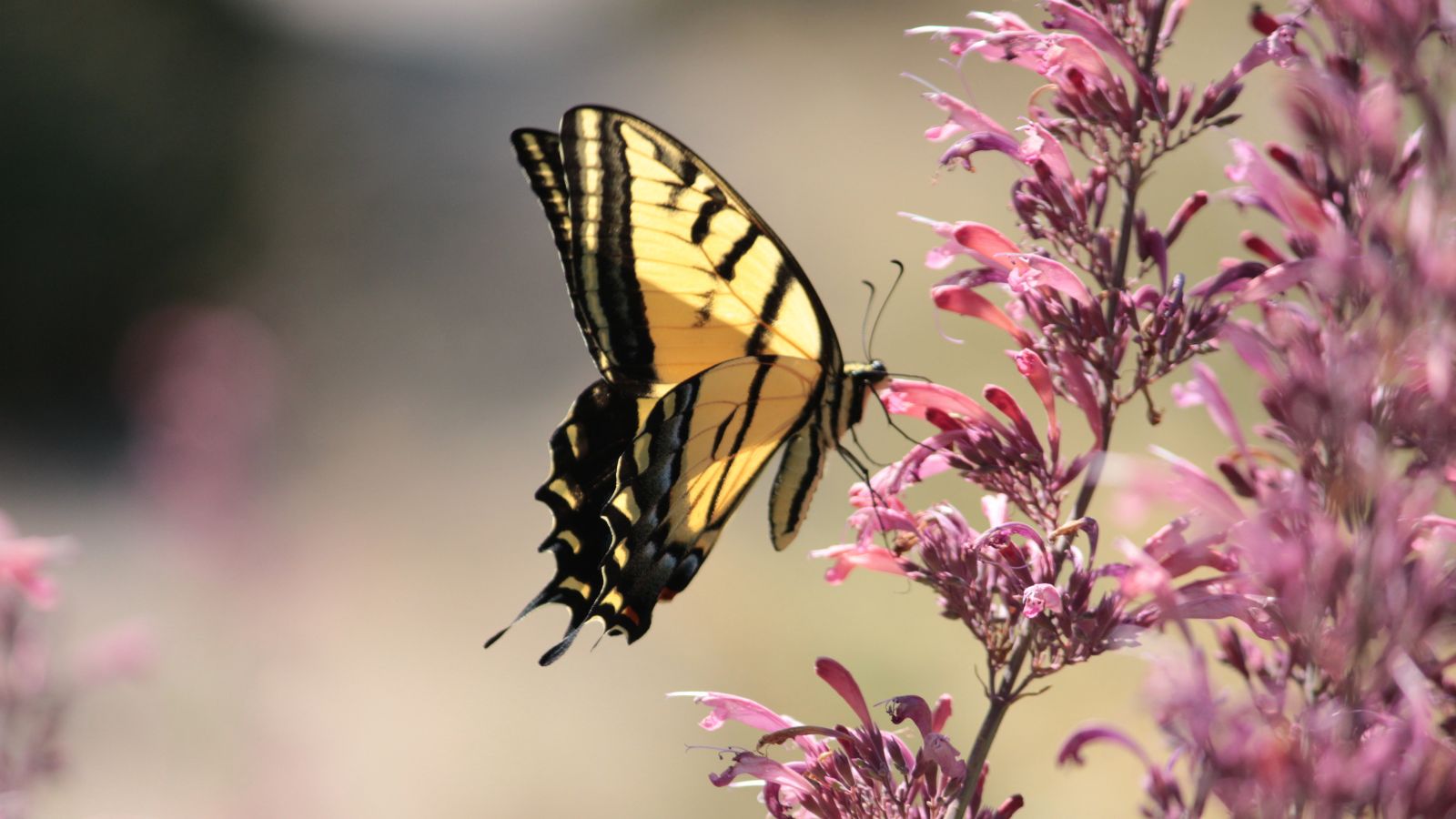 Remove spent flowers to keep the plant tidy.
Remove spent flowers to keep the plant tidy. Deadheading the spent blooms will encourage more flowers to form! Simply pinch or snip them off once they begin to fade. Flowers will continue blooming until frosty fall weather arrives at the end of the growing season.
Limit the height of potted licorice mint by pinching its stem tips in early spring. This encourages bushy new growth that’ll stay short and perky.
Propagation
Propagate agastache with seeds, cuttings, or divisions. Which method works best for you depends on your garden setup. Mature licorice mint provides plenty of cuttings and divisions, while young plants generate seeds at the end of the season.
Cuttings
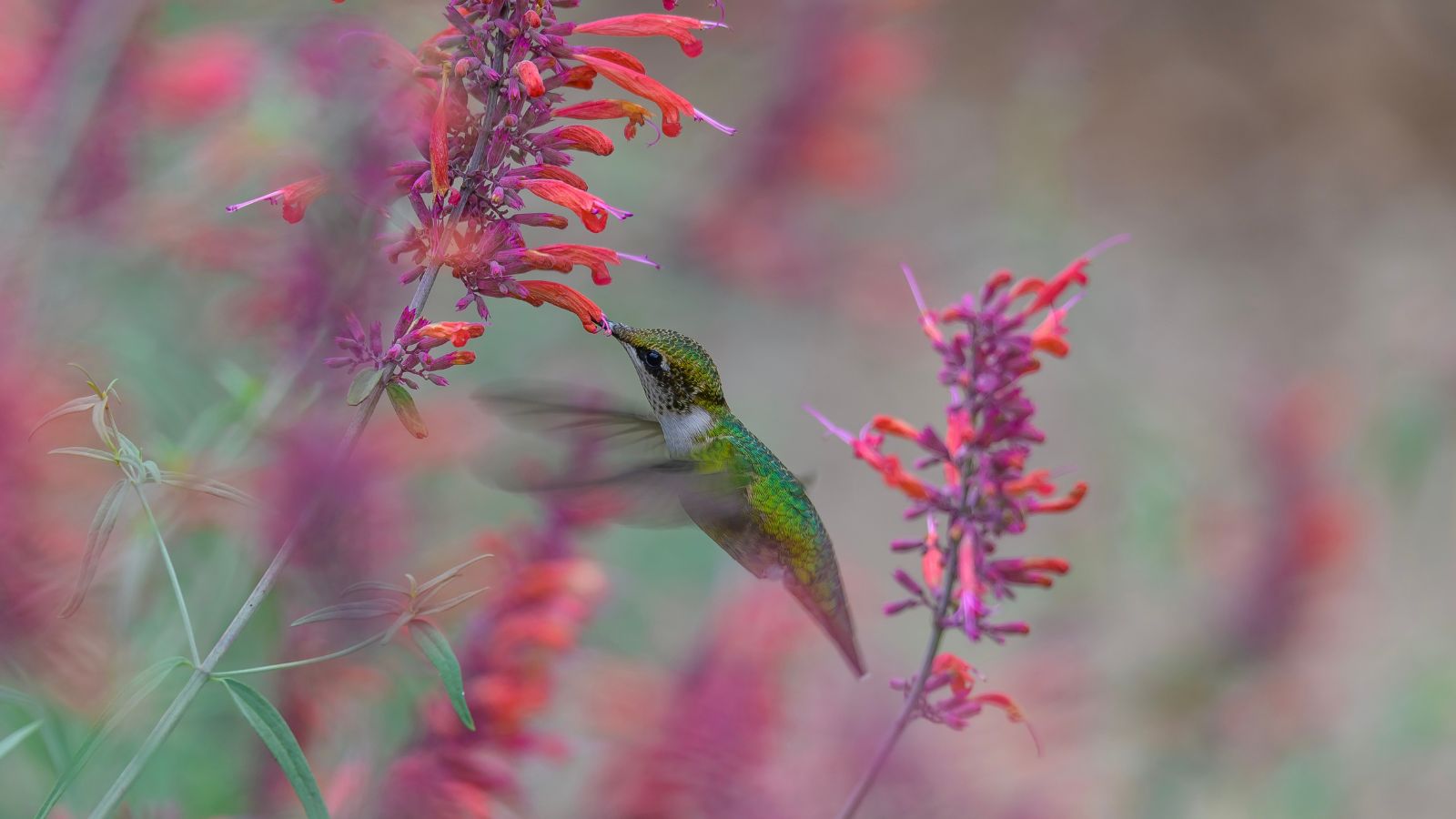 Take cuttings and root them in a protected area to grow more plants.
Take cuttings and root them in a protected area to grow more plants. Agastache cuttings root quickly! They’re easy to take. Simply snip four to six-inch portions of the stems, remove their lower leaves, and stick them in pots with potting soil. Keep the soil moist, but not soggy, and situate the rooting plants under partial or dappled shade.
Strong winds, too much direct sunlight, and dry soil can cause cuttings to die before they form roots. Keep a close eye on them while they’re rooting to ensure you catch any problems early on.
Taking cuttings is a great way to overwinter this plant in cold regions. Simply take cuttings, bring them indoors, and keep them in a well-lit location. Then, the next spring, move them outdoors into your garden.
Division
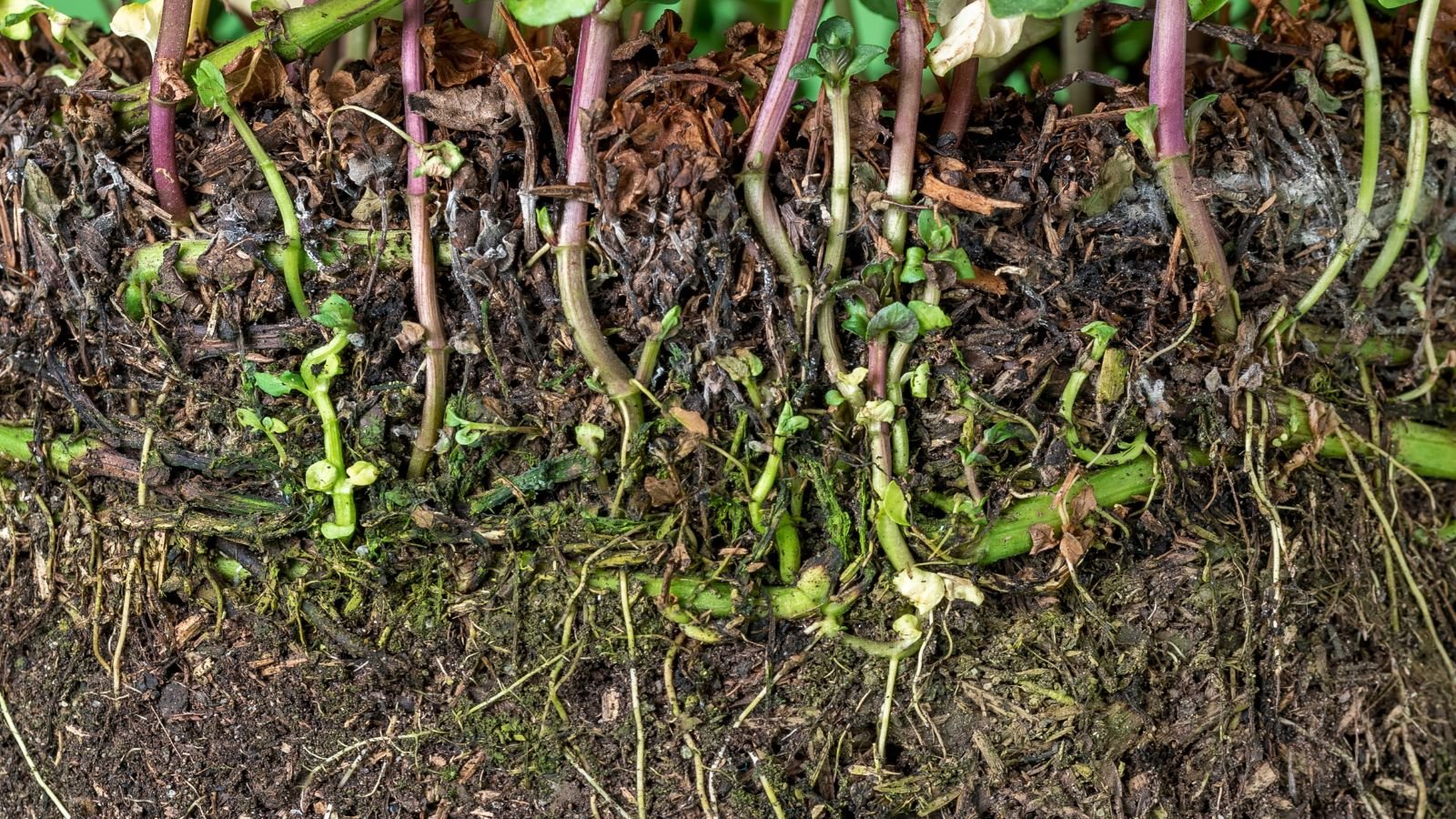 Divide crowded plants to boost growth.
Divide crowded plants to boost growth. Mature licorice mint benefits from division once they grow too crowded. Dense growth can limit the plant’s performance and reduce vigor. Instead of letting it suffer, you can divide the mature specimen into multiple new licorice mints.
Divide healthy agastache clumps in the spring when new growth occurs. Start by digging them up to take a closer look at their roots. Dig down a few inches away from the outer margins of the clump and make a circle around it.
Using your shovel, heave the clump up and out of the ground. Now comes the fun part! Use your spade or shovel to divide the clump into two or more pieces. Stab the shovel down to slice it, or use a sharp knife to cut through the roots.
Ensure each division has plenty of roots after dividing. The more roots it has, the more likely it is to succeed after planting. Replant them throughout the garden in gritty soil, and water them after planting.
Seed Saving
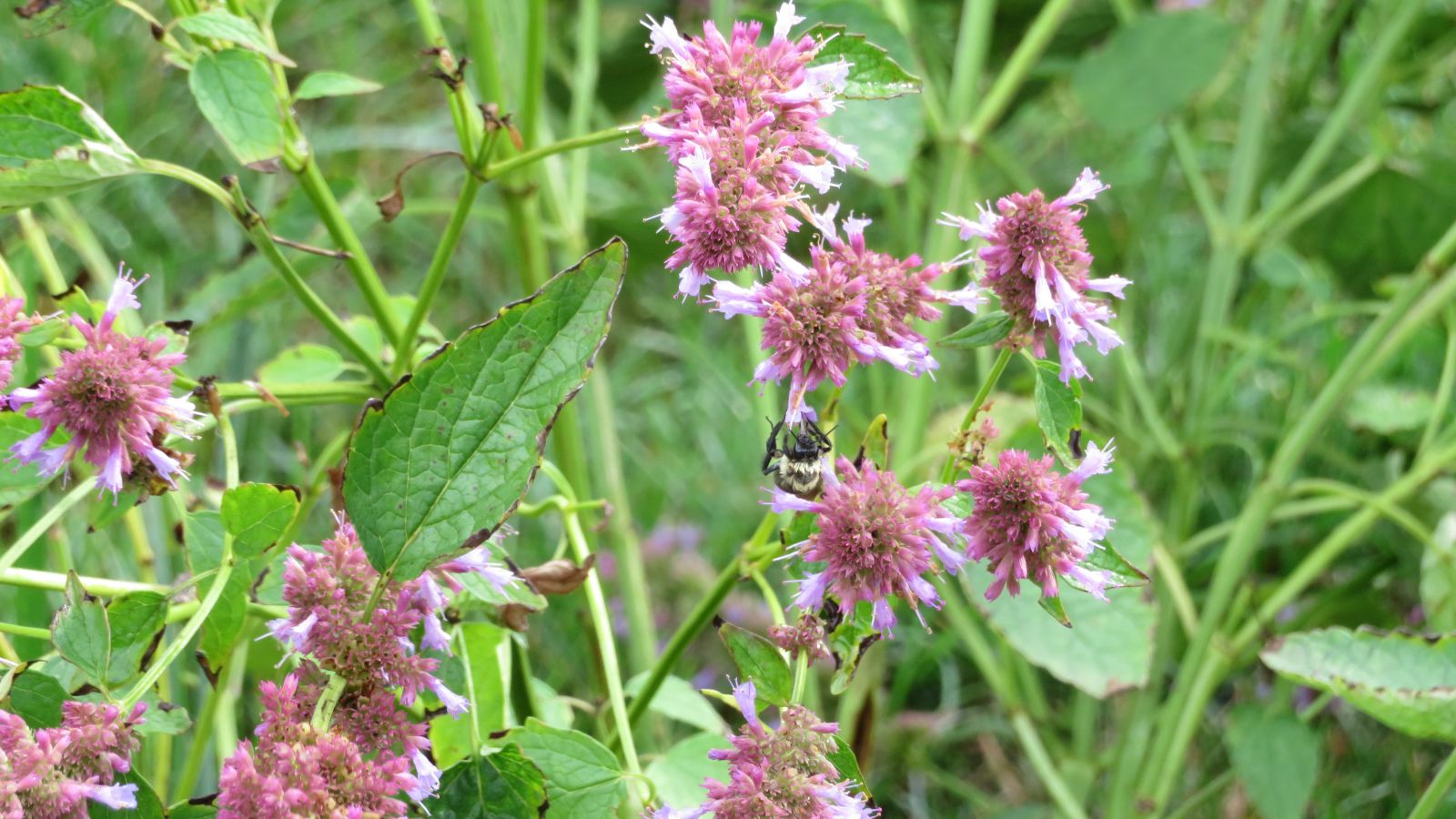 Save seeds at the end of the season to experiment in the garden.
Save seeds at the end of the season to experiment in the garden. Seed saving is a great way to look for new varieties of agastache. Seeds have a chance of sprouting with different characteristics from their parents. They may have different flower colors, leaf shapes, or growth habits.
Save seeds by snipping mature seed heads from the plant late in the growing season. Place them upside down in a paper bag. The ripe seeds will fall to the bottom of the bag.
Collect the ripe seeds into a container, then store the container in a cool, dark, and dry location. Store them in the fridge, a pantry, or a seldom-used drawer.
Harvesting and Storage
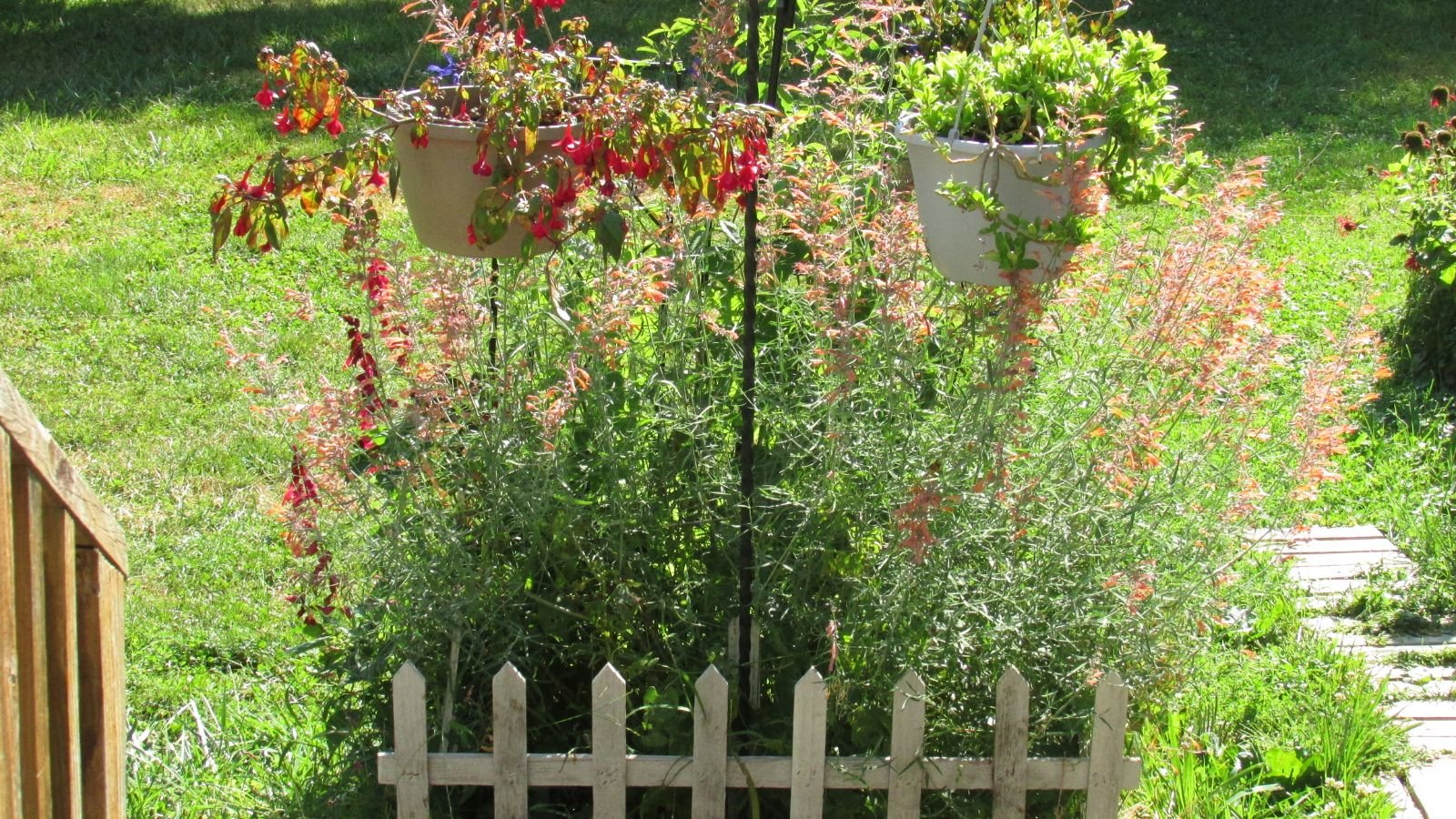 The flowers and leaves are also edible.
The flowers and leaves are also edible.Harvest this plant for its aromatic leaves and blooms to make teas, syrups, or infusions. It’s an edible native plant! How to harvest agastache depends on the part you’re trying to collect.
Harvest agastache blooms by letting the plants grow without pruning until the flowers appear. Then, snip the open blooms and hang them upside down. Dry them in this manner in a dark location, like a corner of the kitchen or a closet. Store them in a jar for up to a year.
Harvest agastache leaves when they’re young and tender. Prune individual stems back, but don’t cut them off completely. Leave a few inches to sprout new growth. Hang the snipped stems upside down to dry, then store them in a glass jar.
Popular Varieties
Many agastaches provide an endless array of bloom colors, sizes, and shapes to choose from! These three varieties are some of the best selections. They’re cultivars and hybrids of Agastache rupestris.
Glowing Embers®
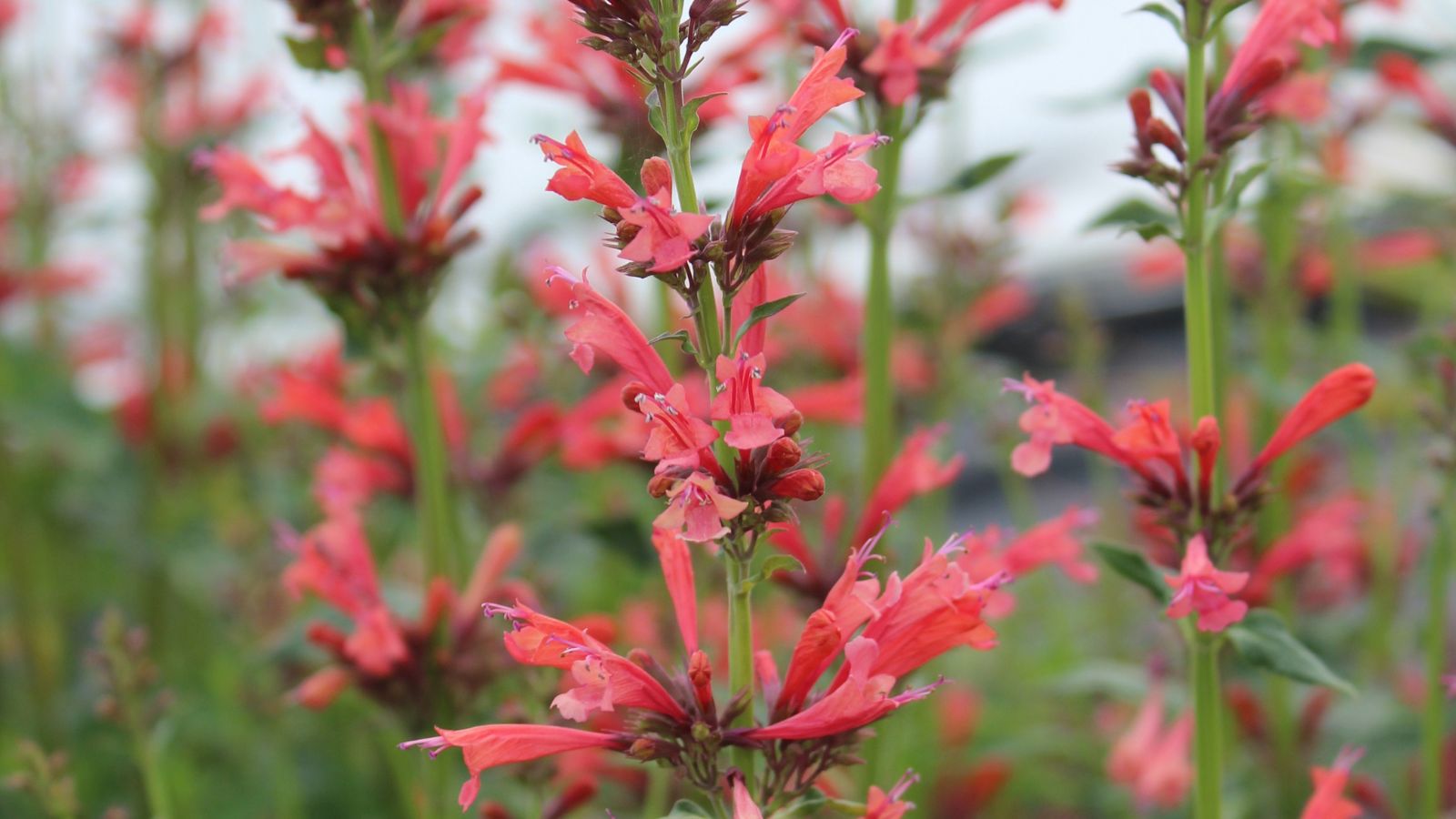 The red blooms attract hummingbirds.
The red blooms attract hummingbirds. It’s no secret that hummingbirds love the color red. Glowing Embers® is the perfect variety for hummingbirds, as it features red in its blooms! Its blossoms are more fiery than the species.
This cultivar stays smaller than the species; it tends to top out around two feet tall. Pinch the stem tips in spring if you’d like to limit its height.
‘Apache Sunset’
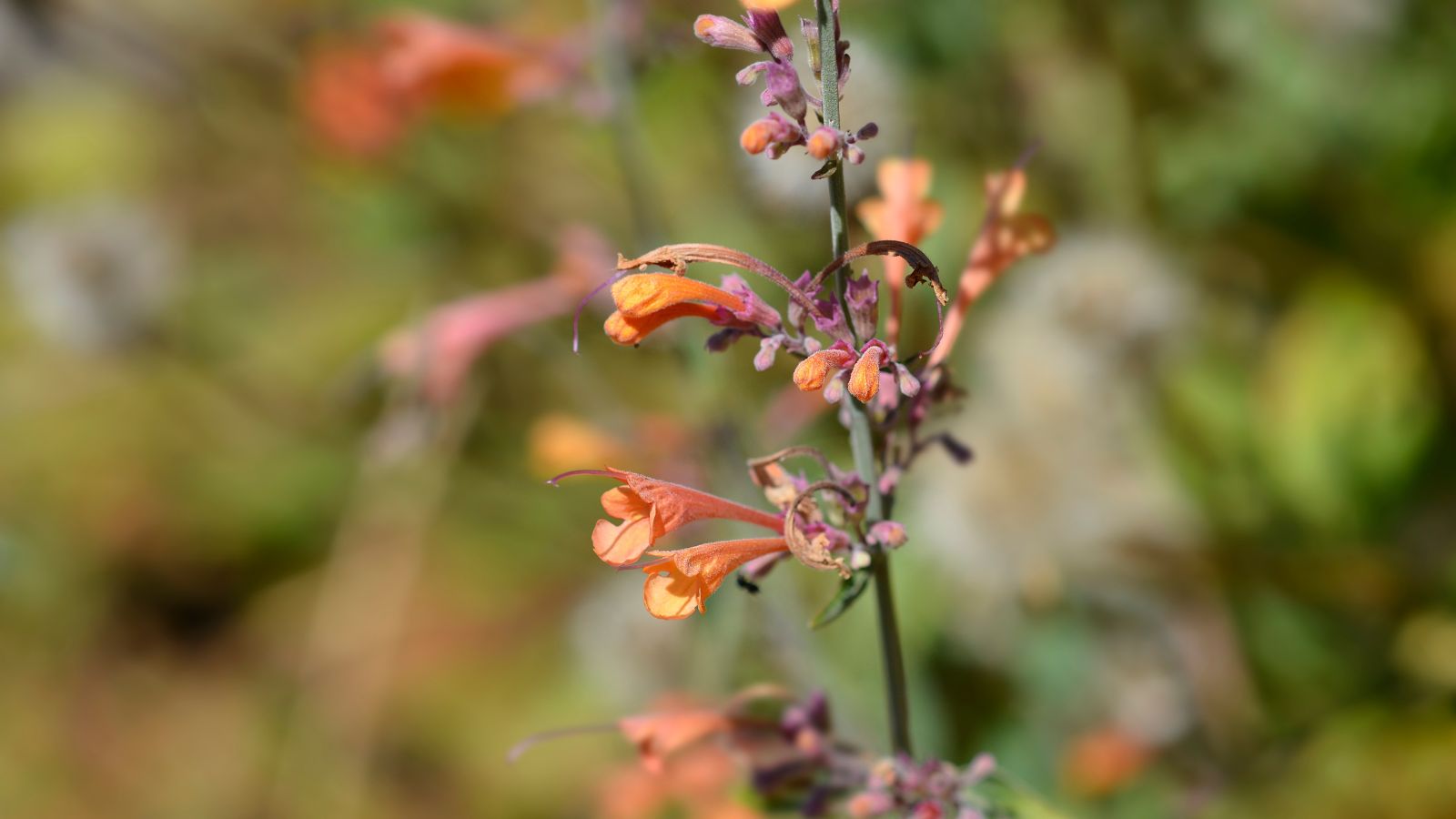 This cultivar has beautiful orange blooms.
This cultivar has beautiful orange blooms. Few cultivars have multi-color blooms, which is why ‘Apache Sunset’ is so special! Its blossoms are pink, salmon, and orange. It stays smaller and more compact than Glowing Embers®, making it ideal for little nooks and crannies in the garden.
‘Apache Sunset’ is an excellent variety for growing in containers. Use pots around two feet wide and deep, and uppot mature plants every few years to prevent rootbound roots.
‘Rosie Posie’
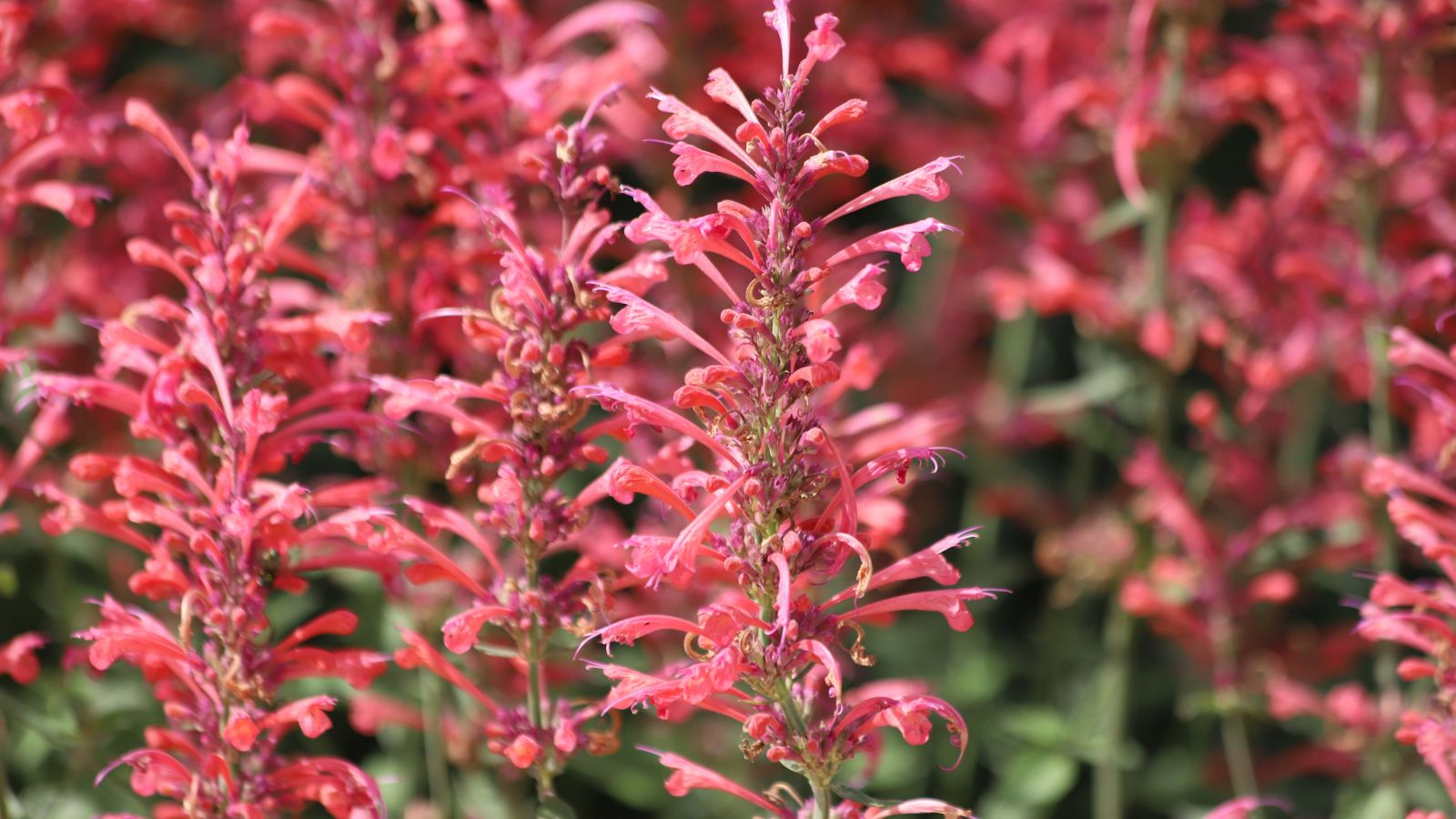 The rosy pink blooms are great for various garden styles.
The rosy pink blooms are great for various garden styles. ‘Rosie Posie’ has a fun name and cute flowers! It features bright, rosy pink blossoms that contrast well with its rich green leaves. Like the previous two varieties, this variety stays under two feet tall and about as wide in maturity.
For the maximum ornamental effect, pair ‘Rosie Posie’ with an orange or red agastache variety in the garden. The pink, red, and orange colors will fill the yard with vibrance and brilliance in the middle of summer.
Common Problems
This U.S. native perennial rarely encounters pests and diseases. It’s an easy-growing specimen, so long as it doesn’t sit in wet soil or dense clay. Prevent any issues by keeping your licorice mint happy and healthy with proper care and maintenance.
Weed Competition
 Insect pests are not common, but weeds can be a concern.
Insect pests are not common, but weeds can be a concern. Weeds are an issue for agastaches. They crowd out the seedlings, and they steal moisture and nutrients from mature clumps. Prevent weeds from harming your plants by pulling them regularly throughout the growing season.
Aside from weeds, insect pests are uncommon because of licorice mint’s intense fragrance. Let insects flourish on the plant if you see them. They’re likely pollinators or beneficial predators that are good for the garden.
Diseases
 Diseases are also quite uncommon in these plants.
Diseases are also quite uncommon in these plants.Though diseases are uncommon, they may occur if agastache is growing in unsuitable conditions. Root rots, rust, powdery mildew, or leaf spot are all common in wet or excessively shaded sites.
Root rots are deadly. However, the other fungal conditions are less harmful. They’ll likely disappear over the winter as the old stems die back and new ones emerge in spring. If diseases recur annually, consider moving your plants to more suitable conditions.


 2 days ago
14
2 days ago
14
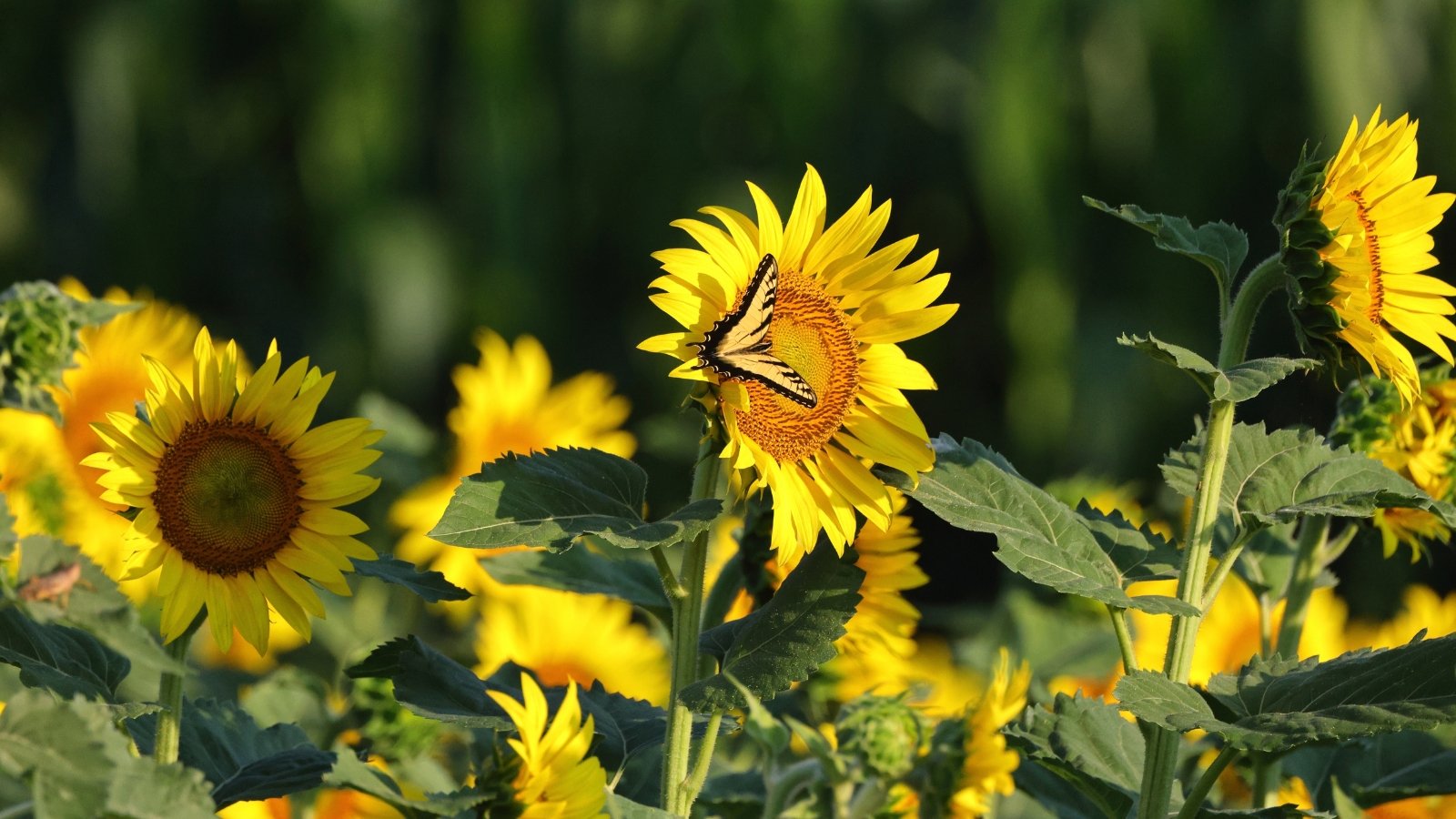
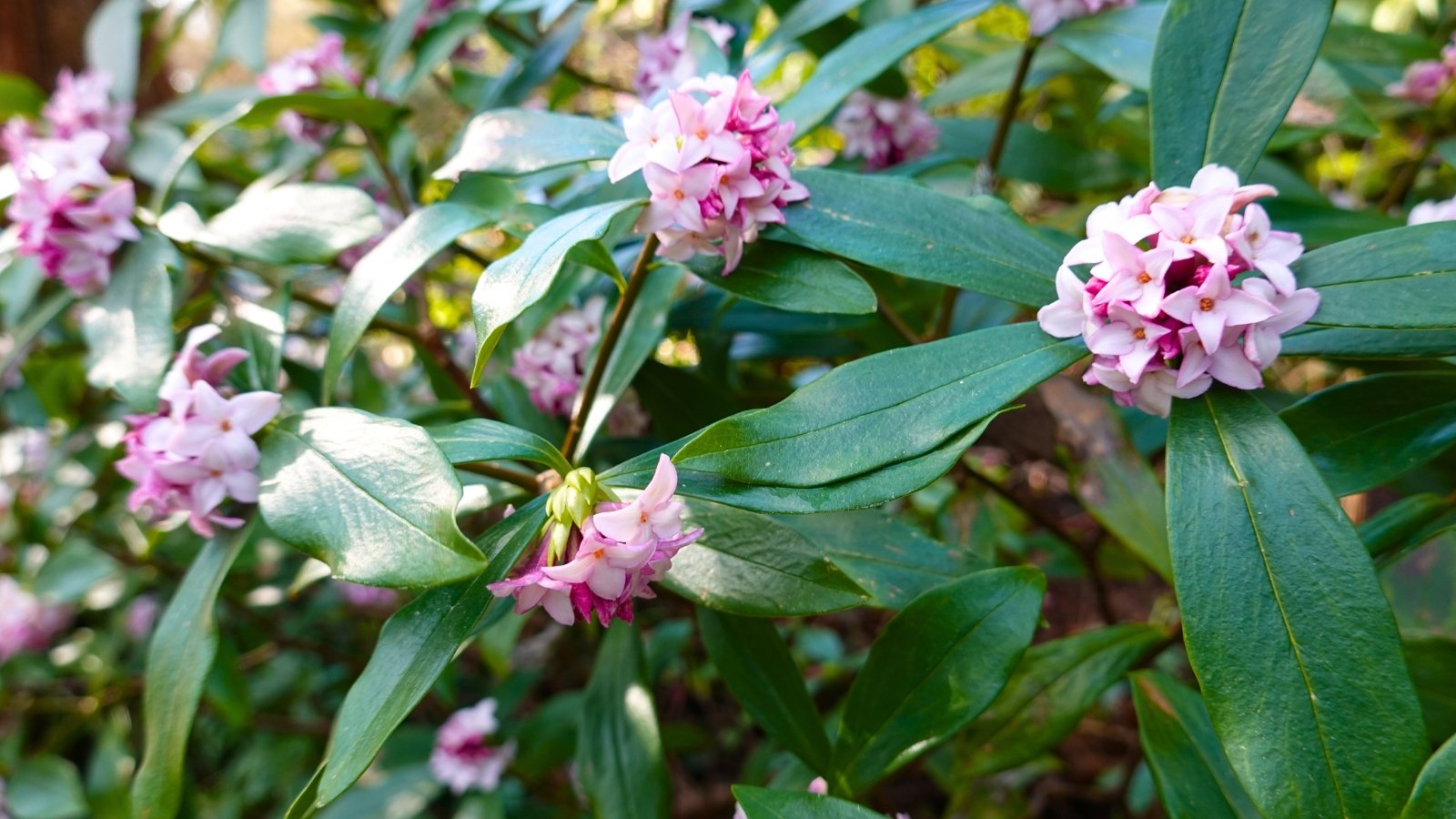

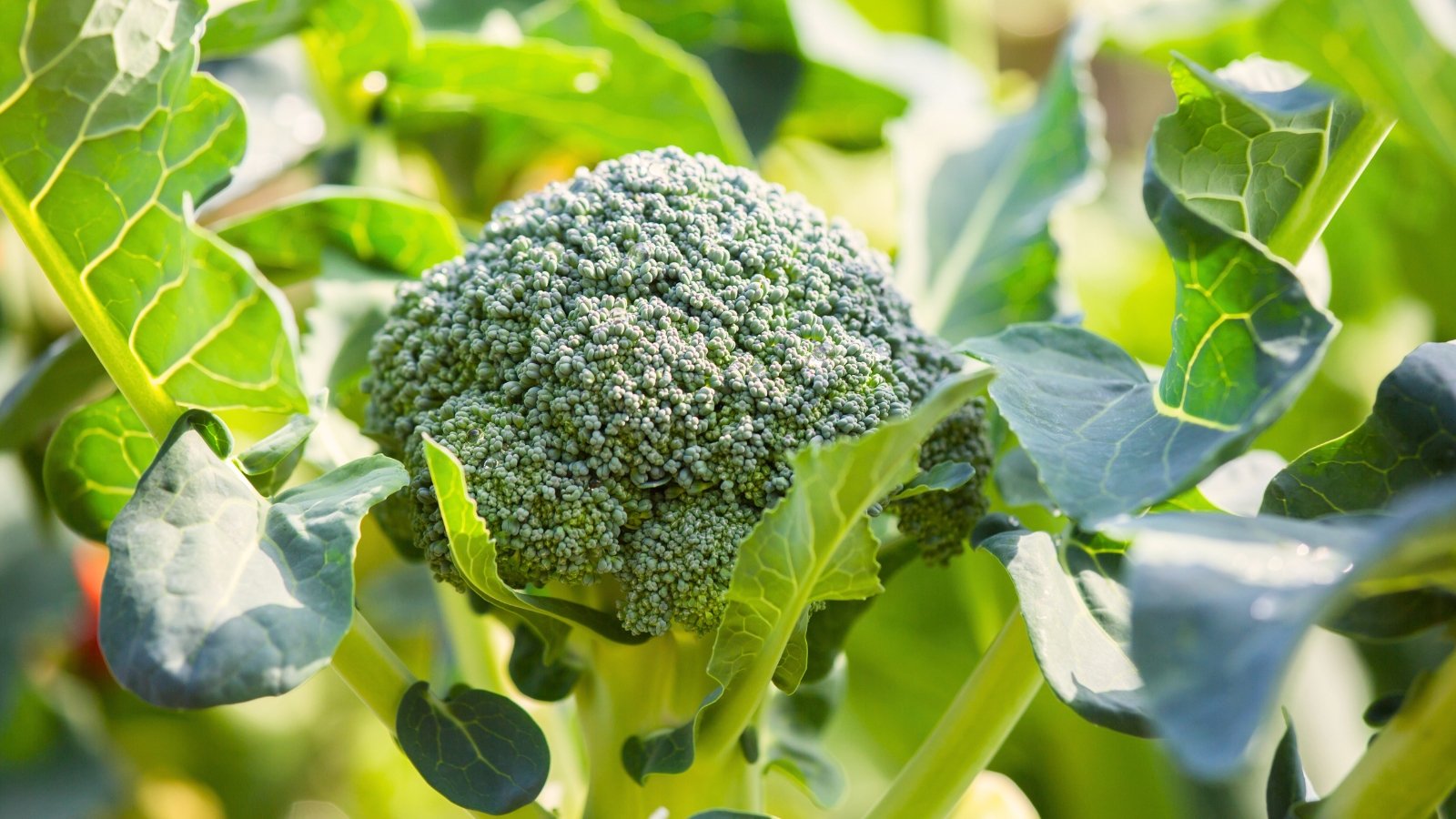

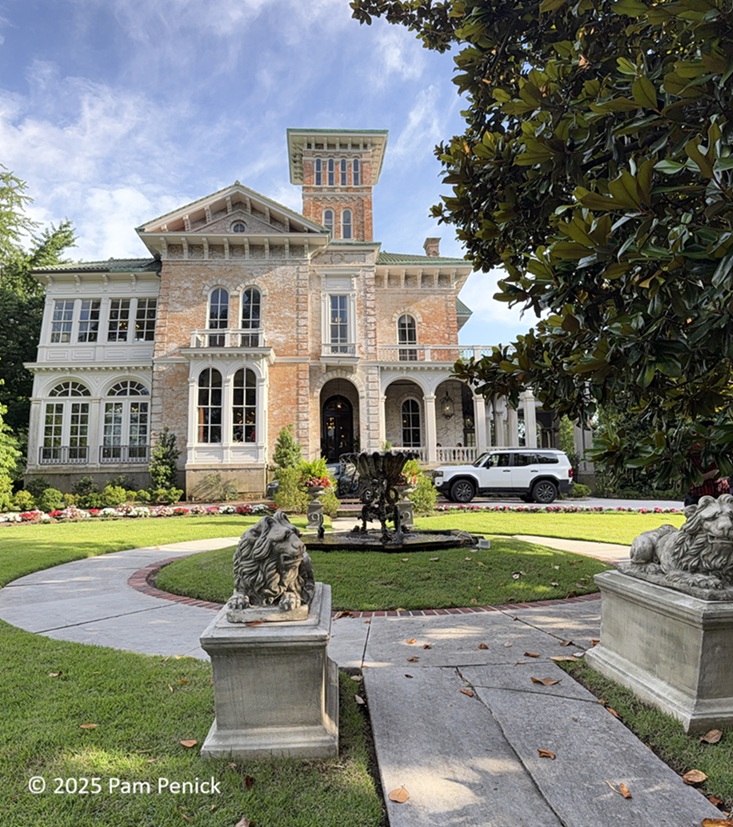















 English (US) ·
English (US) ·  French (CA) ·
French (CA) ·